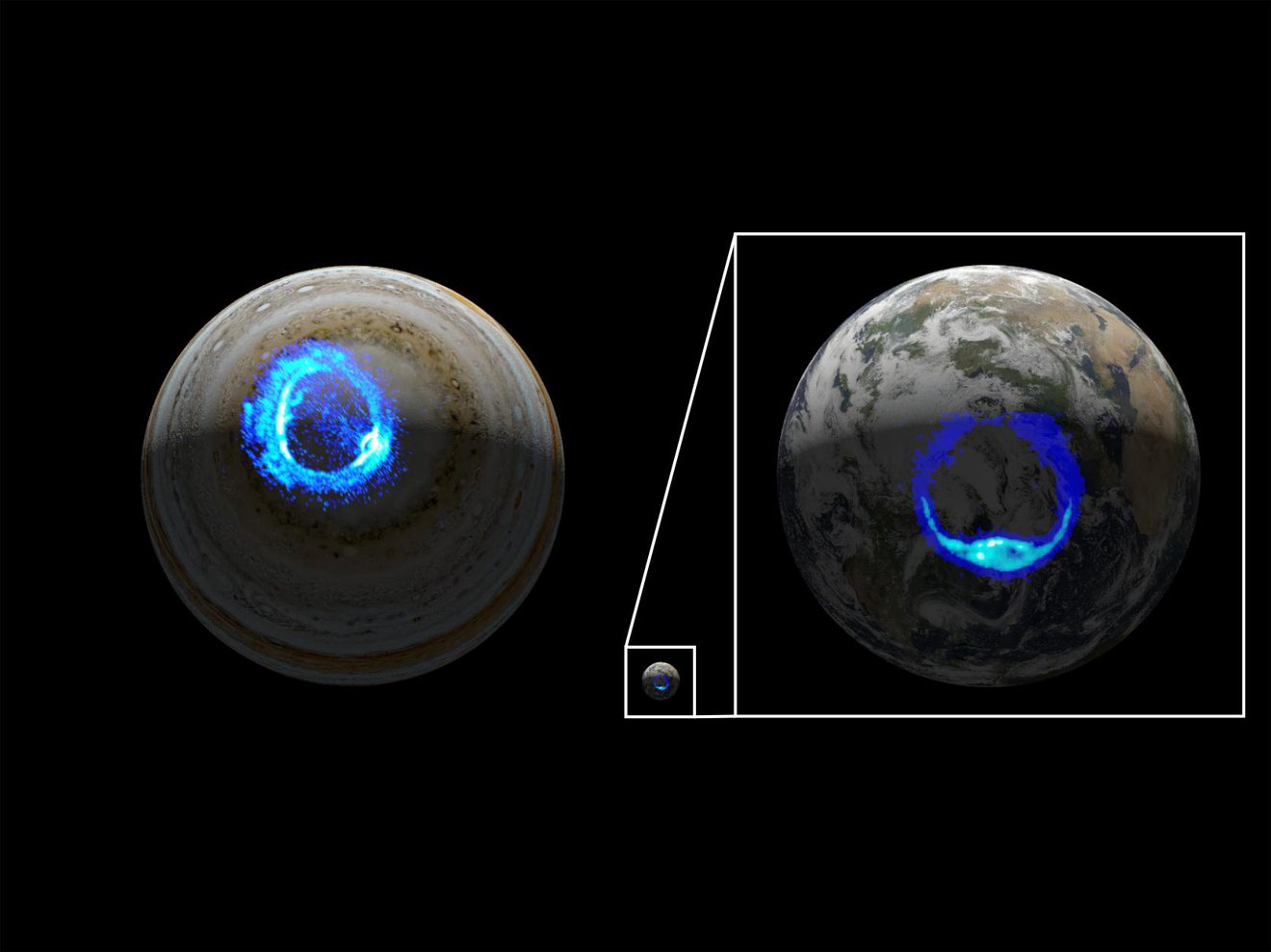The Earth-like "Dawn Storm" Auroras of Jupiter

The article reports on the imaging of all development stages of spectacular auroral events at Jupiter, the so-called dawn storms. The observations show surprising similarities with auroral substorms at Earth, which are "..auroral events stemming from explosive magnetospheric reconfigurations."
Abstract
"Dawn storms are among the brightest events in the Jovian aurorae. Up to now, they had only been observed from Earth-based observatories, only showing the Sun-facing side of the planet. Here, we show for the first time global views of the phenomenon, from its initiation to its end and from the nightside of the aurora onto the dayside. Based on Juno's first 20 orbits, some patterns now emerge. Small short-lived spots are often seen a couple of hours before the main emission starts to brighten and evolve from a straight arc to a more irregular one in the midnight sector. As the whole feature rotates dawn-ward, the arc then separates into two arcs with a central initially void region that is progressively filled with emissions. A gap in longitude then often forms before the whole feature dims. Finally, it transforms into an equatorward-moving patch of auroral emissions associated with plasma injection signatures. Some dawn storms remain weak and never fully develop. We also found cases of successive dawn storms within a few hours. Dawn storms thus share many fundamental features with the auroral signatures of the substorms at Earth, despite the substantial differences between the dynamics of the magnetosphere at the two planets."
The article is open-access, download it here:
https://agupubs.onlinelibrary.wiley.com/doi/epdf/10.1029/2020AV000275
Watch the video here:
https://news.agu.org/press-release/jupiters-dawn-storm-auroras-are-surprisingly-earth-like-video/
Citation
Bonfond, B., Yao, Z. H., Gladstone, G. R., Grodent, D., Gérard, J.-C., Matar, J., et al. (2021). Are dawn storms Jupiter's auroral substorms? AGU Advances, 2, e2020AV000275.
Congratulations to Prof. Yao Zhonghua and his team!
Follow ISSI-BJ on Wechat or subscribe to the ISSI-BJ Newsletter!